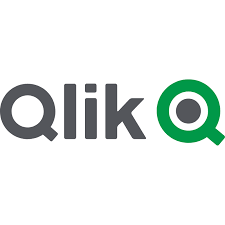Diving into the digital analytics sea, we’re faced with a myriad of tools, each promising to be the beacon that guides us through the murky waters of data to the shores of insight and understanding. Among these tools, Clicky and QlikView shine as two distinct lighthouses, each offering unique illumination for different types of voyagers on the digital sea. But which one will be your guiding light? Whether you’re helming a sleek speedboat or commanding a vast ocean liner, choosing between Clicky and QlikView involves more than just picking a tool; it’s about choosing a journey. Let’s embark on this exploration by focusing on a pivotal aspect that often influences such decisions: Data Visualization and Dashboard Usability.
Clicky | QlikView |
|---|---|
| G2 Score – 4.5 out of 5 stars | G2 Score – 4.1 out of 5 stars |
| TrustRadius Score – 5/10 | TrustRadius Score -8/10 |
Navigating the Visual Seas: Data Visualization and Dashboard Usability
In the realm of web analytics, the way data is presented — its visualization and the usability of the dashboard interface — can be likened to the craftsmanship of a ship’s navigational instruments. They determine not only how smoothly you can sail through seas of data but also how effectively you can interpret the stars and currents of digital information.
Clicky: The Sextant of Simplicity
Imagine navigating the open sea with a sextant, an instrument known for its simplicity yet capable of guiding sailors across vast oceans with precision. Clicky embodies this spirit in the world of web analytics. Its dashboard is renowned for its straightforward, user-friendly design, offering clear and concise data visualization that allows users to grasp their website’s performance at a glance.
Clicky’s strength lies in its ability to demystify web analytics for users at all levels of expertise. By providing real-time data in an easily digestible format, Clicky ensures that even those with minimal analytics experience can make informed decisions swiftly. This approach makes Clicky particularly appealing to small and medium-sized enterprises (SMEs) or individual website owners who value agility and clarity on their digital voyage.
QlikView: The Captain’s Telescope
Now, picture yourself peering through a captain’s telescope, extending your vision far beyond the naked eye, to uncover details and depths previously unseen. QlikView offers this telescopic view in the analytics landscape, with powerful data visualization tools that enable deep dives into complex datasets. Its dashboards are highly customizable, allowing users to tailor their data exploration journey to their specific needs and queries.
QlikView excels in serving organizations that require detailed analytical reports and the flexibility to explore data from multiple angles. Its capability to aggregate data from various sources and present it in interactive, dynamic visualizations makes QlikView a potent tool for businesses looking to navigate the complex waters of big data and business intelligence. However, this sophistication comes with a steeper learning curve, making QlikView best suited for users with a solid grounding in data analytics.
Data Visualization and Dashboard Customization: Crafting Your Digital Sextant
Visualizing data is akin to crafting a sextant for your digital journey, transforming raw numbers into a navigable map of insights. The effectiveness of a tool in this regard hinges on its ability to not only present data in an accessible manner but also allow for customization to suit the unique needs of each voyage.
Clicky: The Intuitive Navigator
Clicky approaches data visualization with the same philosophy that underpins its entire platform: simplicity and intuitiveness. It offers a straightforward, no-frills dashboard that brings essential web analytics to life through clear, concise graphs and charts. Users can quickly grasp visitor trends, traffic sources, and real-time activity with minimal effort, making Clicky a reliable compass for small to medium-sized websites.
Where Clicky truly shines is in its real-time data visualization, offering website owners a live look at their site’s heartbeat. This capability ensures that navigators can make swift decisions based on the latest information, much like a sailor adjusting course with the changing winds. However, those looking for deep customization options in their dashboards may find Clicky’s simplicity both a blessing and a limitation. It provides the essentials without overwhelming users with complexity, ideal for businesses seeking clarity and immediacy in their analytics journey.
QlikView: The Master Cartographer
QlikView, on the other hand, takes a more comprehensive approach to data visualization and dashboard customization. It’s like a master cartographer’s tool, offering robust capabilities to not only display data but also to explore it in depth. QlikView’s
power lies in its associative model, which allows users to make connections between different data sources and uncover insights that might not be immediately apparent. This approach encourages a deeper dive into the data ocean, enabling businesses to chart intricate maps of their operations, customer behaviors, and market trends.
With QlikView, dashboard customization is extensive, offering a wide array of charts, graphs, and controls that can be tailored to fit the specific needs of each business. This level of customization ensures that enterprises can mold the platform to reflect their unique data landscapes, making it a powerful tool for those who require detailed analysis and personalized reporting. The flip side of this capability is a steeper learning curve, as users must navigate the complexities of QlikView’s robust system to fully harness its potential.

Related: Check out our free SEO suite

Scalability and Flexibility: Navigating Growth
In the realm of digital analytics, scalability isn’t just about handling increased traffic; it’s about the tool’s ability to accommodate growing data complexity, expanding business objectives, and evolving user needs without losing performance or requiring a complete overhaul. In the dynamic digital world, where today’s gentle breeze can turn into tomorrow’s gale-force winds, the ability of an analytics tool to scale and adapt alongside your growing business is as crucial as a ship’s ability to weather changing seas. Let’s examine how Clicky and QlikView ensure your analytics capabilities can expand and evolve as your digital presence grows.
Adapting to the Winds of Change
Clicky, with its straightforward and nimble approach, is like a sleek cutter swiftly navigating the coastal waters. It’s designed to provide valuable insights for small to medium-sized businesses with the promise of simplicity and ease of use. This makes Clicky an excellent choice for those at the beginning of their analytics journey or businesses with straightforward analytics needs. However, as your digital footprint expands and your analytics requirements become more complex, you may find Clicky’s simplicity a limitation. While Clicky offers commendable scalability within its domain, businesses experiencing rapid growth or requiring advanced analytics capabilities might need to explore additional or complementary tools to meet their evolving needs.
QlikView: Charting Complex Territories
QlikView, in contrast, is built like a sturdy galleon capable of long voyages across the open ocean, laden with cargo. Its robust platform is designed to handle the complexities of large enterprises, offering a level of scalability that can accommodate massive amounts of data and intricate analysis requirements. QlikView’s flexibility lies in its powerful customization options, allowing businesses to tailor the tool to their specific needs, whether they’re expanding their product lines, entering new markets, or integrating new data sources. This makes QlikView a strong candidate for organizations looking for a long-term analytics solution that can grow and adapt with them, providing deep insights every step of the way.
Community and Ecosystem Development: Charting Collaborative Waters
The strength and vibrancy of a tool’s community, along with the ecosystem of add-ons and integrations it supports, can be likened to the crew and equipment that make a ship seaworthy, enabling it to venture further and weather storms more effectively. The digital analytics journey is not a solo voyage but a collaborative expedition. A tool’s ecosystem, including its community support, third-party integrations, plugins, and resources, can significantly enhance its navigational capabilities, helping users to sail smoothly through data analysis challenges.
Clicky: The Agile Fleet
Clicky, with its focus on simplicity and immediate usability, might at first seem like a lone vessel navigating the vast analytics sea. However, its dedicated user base and straightforward API for custom integrations mean that Clicky is supported by a nimble fleet of smaller boats and rafts — third-party developers, small business owners, and digital marketers who share insights, tools, and extensions that enhance Clicky’s core capabilities. This community may not be as large or as formalized as those surrounding some other analytics platforms, but it’s characterized by a direct and practical approach to web analytics, with members often willing to share tips, tricks, and custom solutions.
QlikView: The Convoy of Explorers
QlikView, on the other hand, is akin to a leading ship in a convoy, surrounded by a fleet of support vessels — a broad community of users, developers, and partners that contribute to an expansive ecosystem of solutions. Its extensive set of features and the complexity of its analytics capabilities have fostered a community where knowledge sharing and innovation thrive. From official forums and user groups to third-party plugins and integrations developed to extend QlikView’s functionality, the ecosystem around QlikView is both rich and diverse. This community support becomes an invaluable resource for new and experienced users alike, offering a wealth of knowledge, custom solutions, and best practices to navigate the more complex aspects of data analysis.
Training and Learning Resources: Equipping Your Crew for the Voyage
Embarking on a journey with a powerful analytics tool without the necessary knowledge and skills can be like setting sail without knowing how to navigate. Both Clicky and QlikView offer various resources designed to ensure that users can not only make use of their basic functionalities but also unlock deeper insights through more advanced features.
Clicky: Charting a Course with Ease
Clicky’s ethos of simplicity and intuitiveness extends to its approach to training and learning resources. The platform offers a selection of straightforward guides and documentation aimed at getting users up and running quickly. For many, the ease of use inherent to Clicky’s interface means that extensive training materials are not as critical; users can often navigate the platform and begin extracting valuable insights with minimal guidance.
However, for those looking to delve deeper or customize their use of Clicky, the platform provides a knowledge base that, while not as comprehensive as some might wish, covers the essentials in a clear and accessible manner. This focus on ease and accessibility makes Clicky particularly appealing to smaller teams or individuals who prefer learning by doing and who value being able to quickly apply insights to their digital strategy.
QlikView: Navigating the Depths of Data with a Full Map
QlikView takes a more extensive approach to training and learning, reflective of its broader and more complex set of capabilities. Recognizing the steep learning curve that can come with such a powerful tool, QlikView offers a wealth of resources designed to bring users from novice to expert. This includes in-depth tutorials, webinars, user forums, and official training courses, covering everything from basic dashboard creation to advanced data modeling techniques.
For organizations willing to invest the time and resources into mastering QlikView, these educational materials are akin to a comprehensive map and navigational guide, ensuring that users can not only understand the full scope of what QlikView offers but also apply its capabilities to complex data analysis challenges. This extensive support structure makes QlikView a strong choice for larger organizations or dedicated data teams that seek to leverage analytics for strategic advantage.
Pricing
Clicky:

QlikView:

Conclusion
In our exploration of Clicky versus QlikView, we’ve navigated through critical aspects like user interface, data analysis, integration capabilities, community support, and learning resources. Each tool offers a unique approach to sailing the vast seas of digital analytics. Clicky stands out as the swift and user-friendly vessel, ideal for small to medium-sized businesses or individual site owners seeking simplicity, ease of use, and real-time analytics. It’s the choice for digital navigators who value quick insights and minimal complexity, offering straightforward tools and resources to get the job done without unnecessary bells and whistles.
QlikView, on the other hand, is the robust galleon equipped for the deep dive into data analytics. It caters to larger organizations and data professionals looking for a powerful, customizable solution capable of handling complex data landscapes. With extensive training and learning resources, QlikView is designed for those ready to invest time and resources into mastering its capabilities, offering comprehensive insights that can drive strategic decisions.
Read Next:
- MeetEdgar vs. Falcon.io: The Best Social Media Management Tool for You
- Adobe Analytics vs Heap: The Best Marketing Analytics Tool for You
- SocialBakers vs SmarterQueue: The Best Social Media Management Tool for You
- Khoros vs SmarterQueue: The Best Social Media Management Tool for You
- Falcon.io vs SmarterQueue: The Best Social Media Management Tool for You






















Comments are closed.